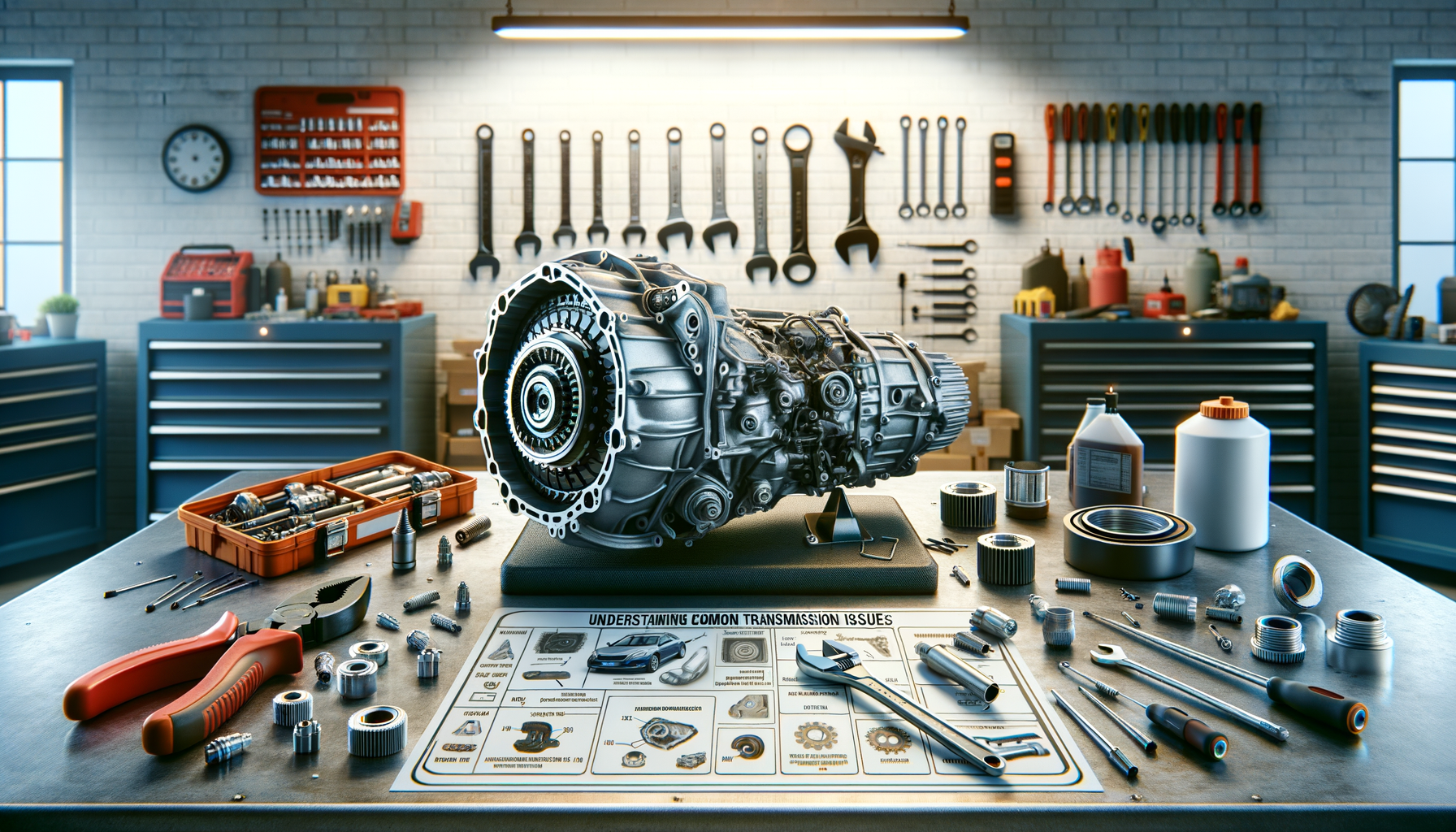Introduction to Transmission Repair
Transmission repair is a critical aspect of vehicle maintenance that ensures your car runs smoothly and efficiently. The transmission system is responsible for transferring power from the engine to the wheels, allowing the vehicle to move at various speeds. Without a properly functioning transmission, a vehicle can experience a range of issues that may lead to costly repairs or even complete transmission failure. Regular maintenance and timely repairs can prevent these problems, ensuring your vehicle remains in good working condition.
Identifying Common Transmission Problems
One of the first steps in addressing transmission issues is identifying the common problems that can occur. These issues often manifest as unusual noises, such as grinding or whining, which can indicate worn-out gears or bearings. Additionally, slipping gears, where the transmission unexpectedly changes gears, can signal a need for immediate attention. Another common problem is delayed or rough shifting, often caused by low transmission fluid levels or a malfunctioning solenoid.
To diagnose these issues effectively, it is essential to pay attention to any warning signs and address them promptly. Regularly checking the transmission fluid level and quality can prevent many of these problems, as low or dirty fluid can lead to overheating and increased wear on transmission components. By being proactive, drivers can save themselves from more severe transmission failures down the line.
Transmission Repair Techniques and Solutions
Once a transmission problem has been identified, there are several repair techniques and solutions available. For minor issues, such as low transmission fluid levels, simply topping off or replacing the fluid can resolve the problem. However, more severe issues may require more extensive repairs, such as replacing worn-out gears, bearings, or solenoids.
In some cases, a complete transmission rebuild may be necessary. This process involves disassembling the transmission, inspecting each component, and replacing any damaged parts. While this can be a costly and time-consuming process, it is often more cost-effective than replacing the entire transmission. Additionally, a rebuild can extend the life of the transmission, providing a more reliable and efficient driving experience.
Preventive Maintenance for Transmission Longevity
Preventive maintenance is key to ensuring the longevity of your vehicle’s transmission. Regularly scheduled maintenance, such as fluid changes and inspections, can help identify potential issues before they become major problems. Additionally, driving habits can significantly impact transmission health. Avoiding aggressive driving, such as rapid acceleration and hard braking, can reduce stress on the transmission and extend its lifespan.
Another important aspect of preventive maintenance is keeping the transmission cool. Overheating is a common cause of transmission failure, so ensuring the cooling system is functioning properly is essential. By following these maintenance practices, drivers can avoid costly repairs and enjoy a smoother driving experience.
Conclusion: The Importance of Timely Transmission Repair
In conclusion, transmission repair is an essential aspect of vehicle maintenance that should not be overlooked. By understanding common transmission issues and addressing them promptly, drivers can prevent costly repairs and ensure their vehicle remains in good working condition. Regular maintenance and proper driving habits can significantly extend the life of a transmission, providing a more reliable and efficient driving experience. By prioritizing transmission repair and maintenance, drivers can avoid unexpected breakdowns and enjoy peace of mind on the road.



Leave a Reply